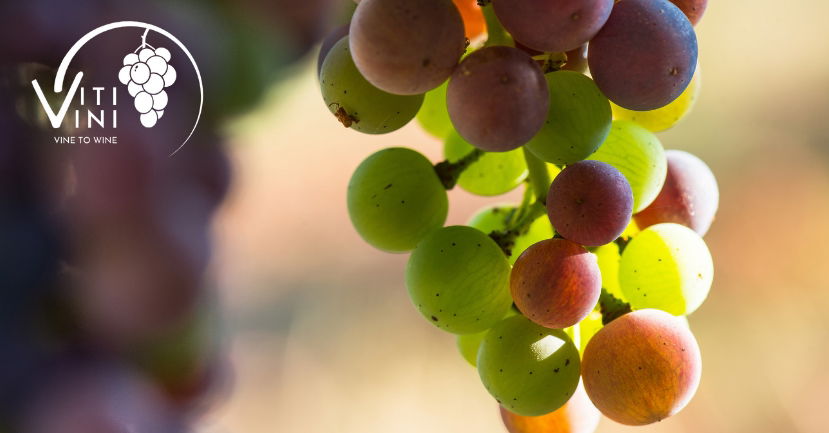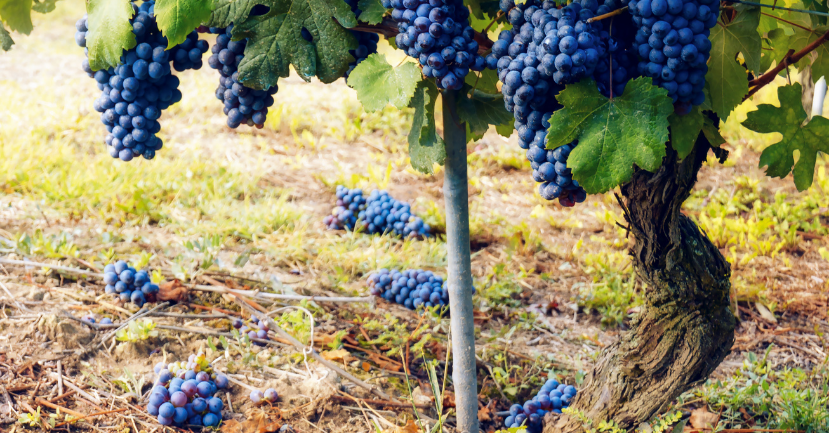BLOG
Vine to Wine: A Year of Viti/Vini - August
Nova Cadamatre MW
Viticulture Insights

August is the calm before the harvest storm. Vegetative growth has slowed considerably and, in some climates, stopped completely due to water stress. The vine now turns its efforts to ripening the fruit that it has developed earlier in the season. Although the berries are close to their final size, the skins will begin to thin, change color, and gain considerably more weight as they fill with sugar produced by the leaves. In climates that experience rain during this period, splitting becomes a risk.
Veraison, is similar to the French word verité, meaning truth; it marks the point at which the grapes reveal their true colors. Up to this point, all grapes are the same hue; a bright, vivid, spring green. At veraison, “white” grapes turn a yellow gold. Pink or “gris” grapes turn different shades of rose. Red grapes turn various shades of dark purple. This is a gradual transformation that occurs berry by berry. For this reason, it is quite common to see many different colors, representing the various stages of this metamorphosis, in a single cluster.
This is also the moment when a vineyard manager can even-up the ripening process, especially if the bloom period was long due to weather. Once the vines have reached 50-70% verasion (meaning, 50-70% of the fruit has started to or has already changed colors), the vineyard crew can go through and remove clusters that are still 100% green. These clusters are clearly behind in the ripening process and will prolong the harvest date if left hanging on the vine.
While this is not a requirement for all wines, it is usual practice for many vineyards. Some varieties benefit from a wide range of ripeness in the fruit (such as Pinot Noir or Chardonnay). The less ripe clusters bring freshness to a blend and the riper clusters bring richness and weight.
Bordeaux varieties, on the other hand, benefit from “green drop” more significantly. Removing the 100% green clusters makes the remaining crop more uniform in ripeness and prevents the fruit which is further ahead from becoming dried or jammy while waiting for green fruit to ripen.
The need for green drop also depends on the vintage. In years when flowering was fast and uniform, it is much less important because the fruit is on a much more even ripening trajectory.
The green drop is also the last opportunity to address crop load. Ideally, crop load is adjusted during pruning and just after flowering, however there are years where more fruit needs to be removed in order to manage quality. This decision usually involves a discussion between the vineyard manager and the winemaker.
Crop removal is much less impactful at this point than if the crop load had been addressed earlier in the season. However, if a green drop is decided upon, it needs to be carried out quickly. If the crop load is not adjusted by the end of veraison, with only a few weeks left before harvest, it is not likely to make enough of an impact to be worth the time and effort.

August is also a time for harvest preparation in the vineyard and winery. In the vineyard, discussions turn to harvest methods. Will the fruit be hand-harvested or machine-harvested? If hand-harvested, the vineyard manager usually needs to make sure that they have labor on call for when the fruit is ready.
Right before the pick, the team may go through and drop any problematic fruit, if rot is a concern. This is particularly helpful in humid areas or when picking thin-skinned varieties with tight clusters such as Pinot Noir. If machine harvesting, the team needs to make sure that the vines are ready for that process by removing the secondary crop and making sure that the vine is neatly contained within the trellis area so they are not damaged by the harvester as it moves along the row.
The choice as to whether to hand or machine harvest is primarily one of economics and labor availability. Finding a labor force to hand pick is becoming increasingly more difficult. Although a hand harvest is the best for wine quality, the winery must be prepared to pay a handsome premium for the luxury of a hand harvesting crew.
For many wineries, the predictability of machine harvesting is more helpful than chasing down hand crews and allows winemakers to pick at the optimum time vs. waiting for crew availability. Hand picking remains the gentlest and best harvest method for preserving grape quality, but unfortunately, the lack of labor availability means that it is now only reserved for the best of the best vineyards.
In the winery, the winemaking team is busy making sure they have ordered all the materials needed for harvest, the most important of which, is yeast. While some wineries use native yeasts for some of their wines, many use cultured yeasts which are purchased from winemaking supply companies. There are thousands of strains of yeast on the market, but most are a variation of a strain called Saccharomyces cerevisiae. This is the same strain that is used in baking, but the variants used for baking are selected for their advantageous leavening properties just as the ones selected for winemaking are selected for their advantageous sugar-to-alcohol conversion properties (among other things).
When selecting what yeast to use, winemakers consider many factors—the style of wine desired, the variety, the final alcohol level, residual sugar level, and flavor/aroma/textural characteristics that the yeast may enhance or decrease. Yeast selection can also affect the speed of fermentation and how much yeast available nitrogen (YAN) the juice needs to be healthy. Yeast selection can have a considerable impact on the final wine profile. Therefore, some winemakers use different yeasts for different lots of wine, then blend these different lots together to create a more complex end product.
Yeasts
The term “native yeast” can be somewhat confusing. Fermentations carried out by yeasts that are found on the grapes themselves or in the winery atmosphere are often referred to as “native,” “indigenous,” “wild,” “ambient,” or “spontaneous.” In reality, these terms just refer to the fact that the fermentation was not inoculated with a purchased or “cultured” yeast. It is important to keep in mind, however, that some of the strains of “cultured” yeasts were isolated from famous areas such as Burgundy or Portugal. Many “cultured” yeasts had “native” origins.
Multiple yeast strains initiate “native” fermentations, but as the alcohol level increases, most of these initial yeast strains die off, usually leaving the very hardy Saccharomyces cerevisiae to finish the job. Because of the diversity of the yeast strains involved in “native” yeast fermentations, the resulting wines usually show greater mouthfeel and complexity than wines made from single-cultured strain fermentations.
Next month we will dive into the harvest season and explore white grape picking parameters, sugar measurement and the basics of white wine fermentation.
About "Vine to Wine: A Year of Viti/Vini" Series:
“Vine to Wine” is a new blog series that chronicles what is happening in the vineyard and in the winery each and every month of the calendar year. Nova Cadamatre, MW and winemaker, will author these authoritative and detailed posts drawing upon her studies (Cornell Viticulture and Enology graduate) as well as her winemaking experience in California, China and the Finger Lakes.
Each “Vine to Wine” installment details that month’s vineyard and winery tasks with deep dives into a particular grape growing or wine making topic such as pruning methods and training systems or barrel aging and fermentation vessels.
The series is designed to give wine students and educators an opportunity to develop or hone their technical savvy.
MORE "VINE TO WINE" ARTICLES:
Want to know when new blog articles are released? Join this list to be notified!



